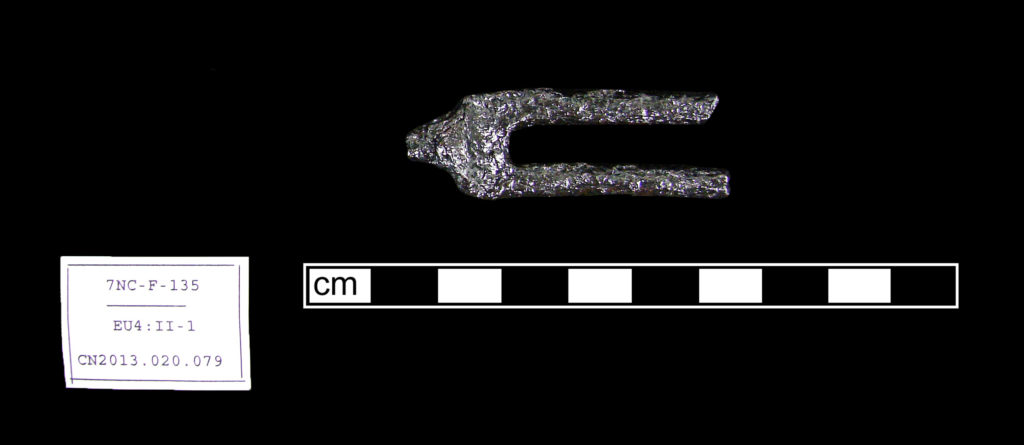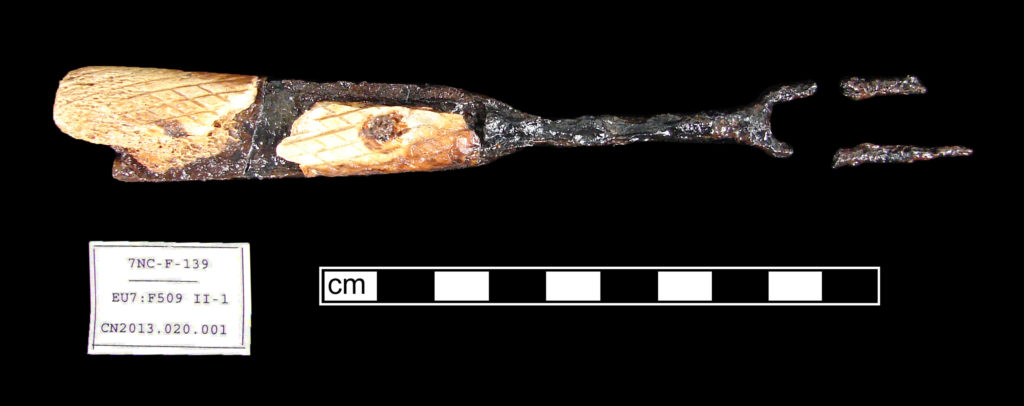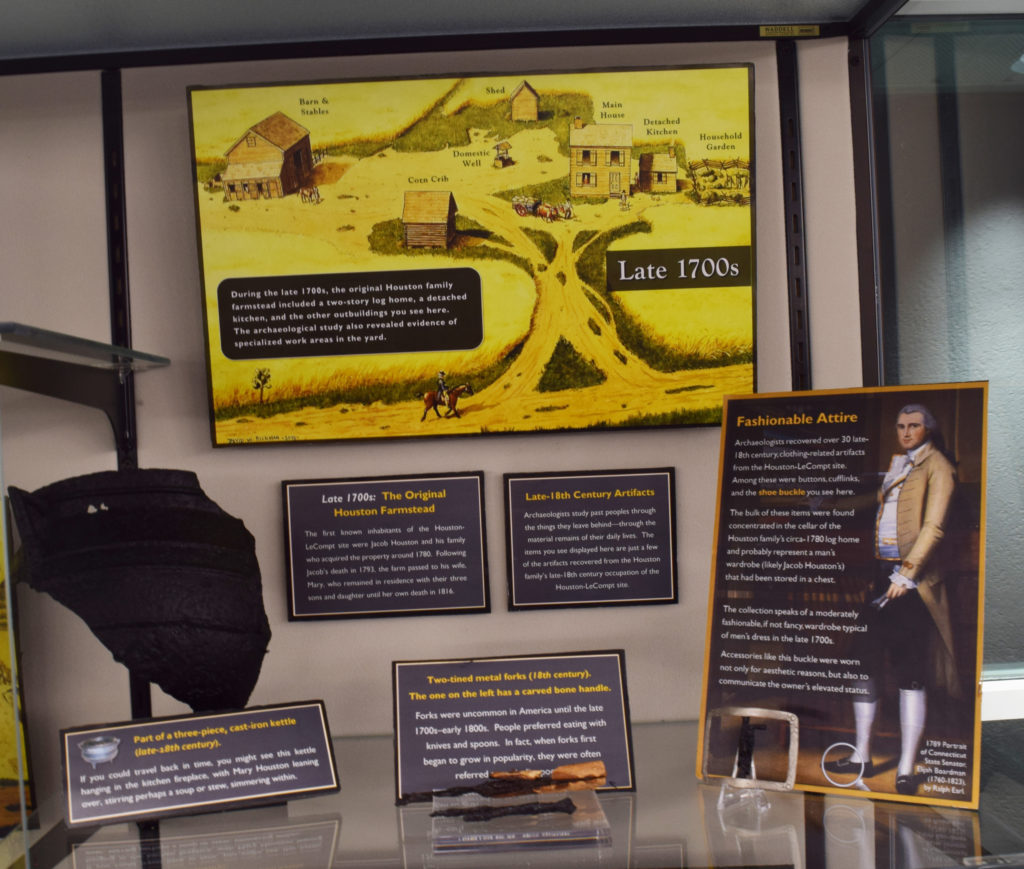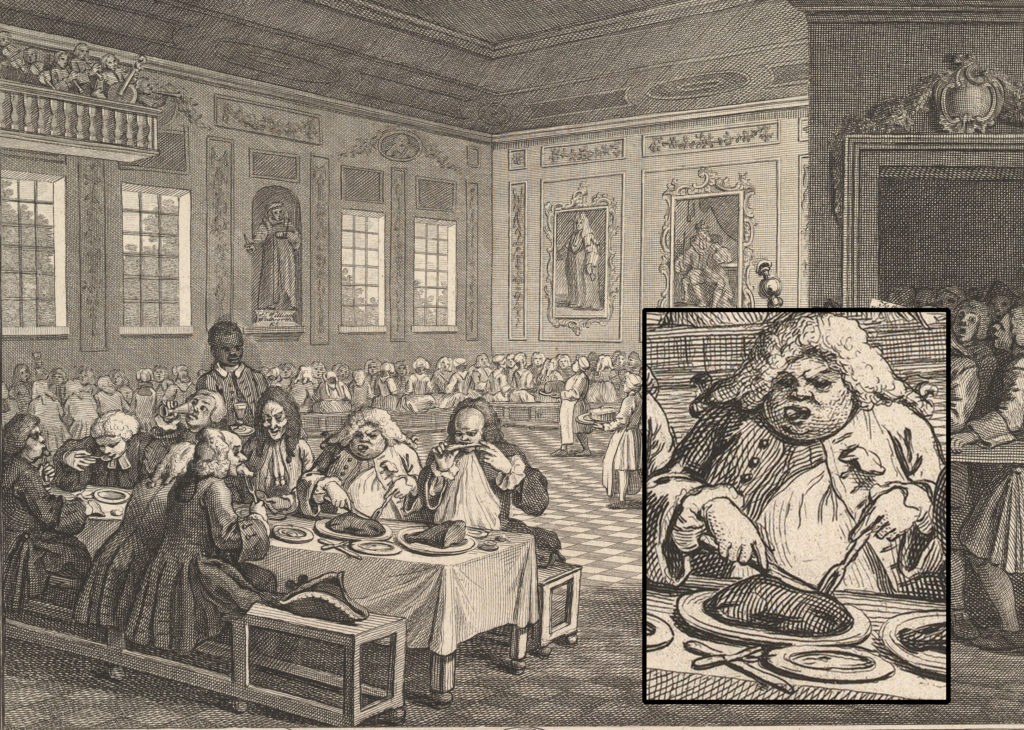Featured Fragment – Eighteenth-Century Forks
By Kerry S. González
Dovetail Cultural Resource Group recently installed two exhibits highlighting archaeological finds on behalf of the Delaware Department of Transportation and the Federal Highway Administration: one at the Smyrna Rest Area in Smyrna, Delaware, and the other at the Delaware Welcome Center in Newark, Delaware. The exhibits feature artifacts recovered during the excavations at the Houston-LeCompt (7NC-F-139) and Armstrong-Rogers sites (7NC-F-135).
This month’s blog focuses on two of those artifacts, one found at each site. We are using two similar artifacts found during our excavations in Delaware to: one, shamelessly plug the recently installed artifact exhibits on the Houston-LeCompt and Armstrong-Rogers sites; and two, highlight an artifact associated with eating, which seems appropriate considering it is Thanksgiving week.
The fork recovered from the Armstrong-Rogers site consists only of the tangs and shoulders but even these seemingly insignificant attributes provided information on its date and use. Around 1770 the shoulders of a fork became more squared and less rounded, suggesting that the fork from Armstrong-Rogers predates 1770 (Dunning 2000:38). Additionally, according to Phil Dunning (2000:38), “average-quality forks began to be made with three tines, which had previously been found only on fine cutlery.” While this fork is not displayed in the exhibit on the Armstrong-Rogers site, many other artifacts are on display and highlight the late-eighteenth and early-nineteenth occupation of the site.

Fork Recovered from the Armstrong-Rogers Site, Conserved by the MAC Lab. Image courtesy of the Maryland Archaeological Conservation Lab (MAC Lab).
The fork from the Houston-LeCompt site, which can been seen in the newly installed exhibit at the Smyrna Rest Area, is a two-tined fork with a bone handle. Based on the design of the scored bone handle and rounded shoulders, as discussed above, this fork also predates 1770 (Dunning 2000).

Fork and Scored Bone Handle Recovered from the Houston-LeCompt Site, Conserved at the MAC Lab. Image courtesy of the MAC Lab.
During the mid-eighteenth century, forks were gaining popularity but were not used in the same manner as today. The fork’s main role was to hold the food in place while being cut with a knife. A person would then deliver the bite-sized piece using the knife into their mouth, leaving the fork with no task other than to anchor the food. According to Ivor Noël Hume (1969), as forks became more popular at the end of the eighteenth century, the knife became more rounded, all but reversing their roles.
When you sit down to dinner this Holiday season and pick up your trusty three- or four-tined fork, think of how far we have come since the eighteenth century. And if your holiday travels take you through Delaware and you happen to pass by one of the above-mentioned rest areas, please stop by and take a peek at our exhibits!
https://www.visitdelaware.com/listings/smyrna-rest-stop-and-information-center/381/
https://www.visitdelaware.com/listings/delaware-welcome-center/2029/
Any distributions of blog content, including text or images, should reference this blog in full citation. Data contained herein is the property of Dovetail Cultural Resource Group and its affiliates.
References:
Dunning, Phil
2000 Composite Table Cutlery from 1700 to 1930. In Studies in Material Culture, edited by Karlis Karklin, pp. 32–45. The Society for Historical Archaeology, California University Press, California, Pennsylvania.
Hogarth, William
1747 The Industrious ‘Prentice Grown Rich and Sheriff of London: Industry and Idleness (Plate 8). Metropolitan Museum of Art, https://www.metmuseum.org/art/
collection/search/398593, accessed November 2017.
Noël Hume, Ivor
1969 A Guide to Artifacts of Colonial America. Vintage Books, New York



